The Zodiac Sea Wolf is one of my favorite relatively under-the-radar, affordable vintage divers. Like all vintage pieces however, it has its quirks. This most recent restoration very well illustrates many of the internal issues one can face when diving into the the lair of the Sea Wolf. It is also a great example of a rapidly growing parts problem in the vintage watch world.
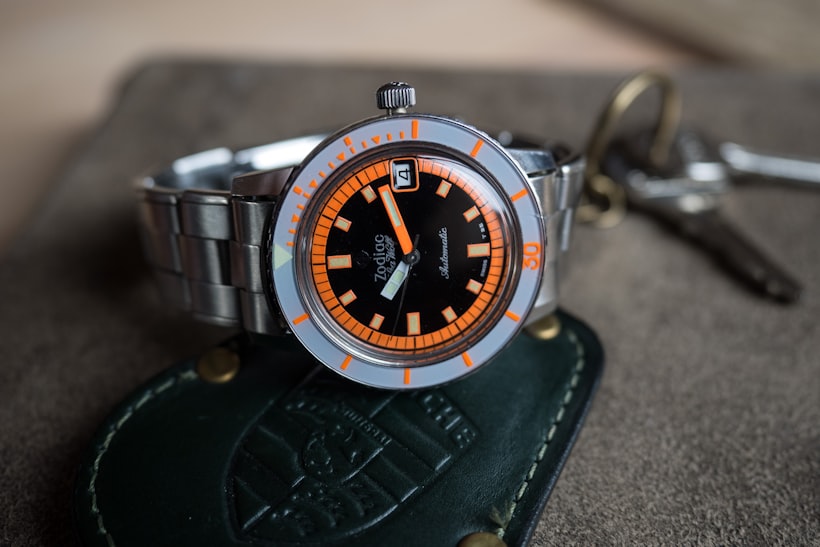
This watch came to me with the case back off, a melted gasket, and a very, very common problem with these calibers: a loose offset cannon pinion.
A melted gasket is not the hardest or the worst thing to deal with. It's just a messy process. Additionally, it is a process that, if done properly, should include no tools or objects that may scratch the case. All too often I have seen screwdriver scratches when people have given in to the temptation to quickly remove this gunk, and while they may have succeeded, they've also damaged the watch. I use a combination of pegwood, swabs, pithwood, and a special type of wipe usually used in clean rooms; it's slower, but there's no risk of damage. As you can see below, cleaning a gasket can require a bit of elbow grease and disposables.
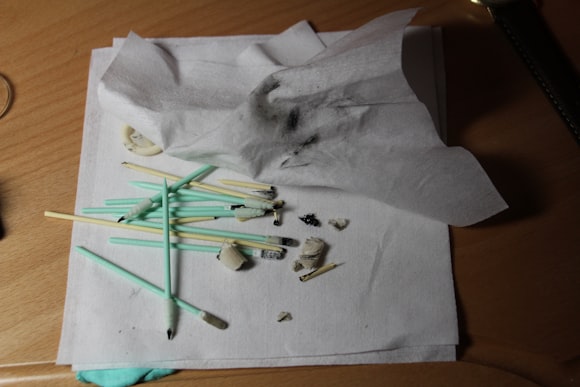




To most of us, the term “offset cannon pinion” sounds like a jumble of seemingly unrelated words, but to a Zodiac collector it’s an all too familiar and dreaded part within their timepiece. It causes a thoroughly annoying problem, and worse than that, it is a long obsolete and out-of-production part. While decent Sea Wolfs can be purchased in the $200 to $300 range, an offset cannon pinion will run you about $80 on eBay, if its available.

This is not a problem exclusive to the Sea Wolf or vintage Zodiacs. The movement that powers this watch was actually a joint development between Doxa, Eberhard, Favre-Leuba, Girard-Perregaux, and Zodiac. A famous example of a watch using this movement is the very rare Girard-Perregaux Observatory Chronometer.

To explain the offset cannon pinion, it only makes sense to first explain a cannon pinion in general terms. The easiest way to think of a cannon pinion is to look at your watch and know that the thing your minute hand is attached to is likely the cannon pinion. It transmits energy from the gear train to the dial-side, where that power can be used to show time, power a date mechanism, etc. Most commonly, the cannon pinion is attached to the center wheel, which typically turns once per hour. The cannon pinion is actually held in place on the center wheel's axis by friction. If you have ever experienced a situation where setting the hands on your watch feels too easy and loose, chances are that friction is too low between the center-wheel post and the cannon pinion. This loss of friction in these Zodiacs is a near certainty over time, and when it happens this causes the watch to tick perfectly, and the second hand to advance as it should – but the minute and hour hands remain motionless.

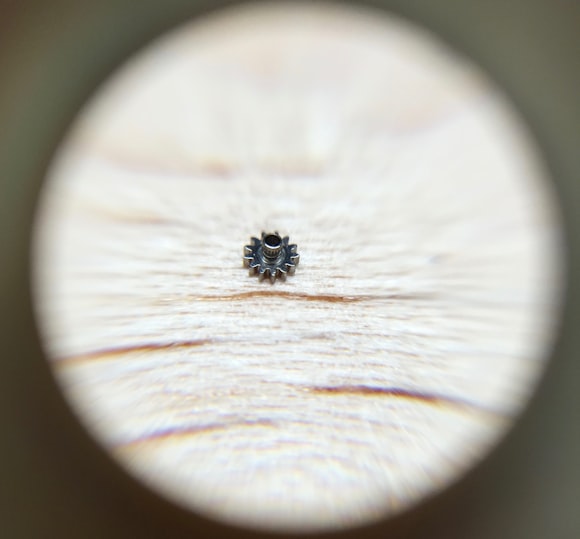
In normal watches, this adjustment is very simple. The cannon pinion is easily removed and gently indented to increase the friction. On the Zodiac and similar calibers, the cannon pinion is not only much, much smaller than most, but it is also attached to a wheel directly. In a typical movement, the main plate is between the cannon pinion and the center wheel (the cannon pinion is on the dial side, and the center wheel on the other side) allowing for a stable surface for leverage when popping the cannon pinion off the center wheel. The Zodiac arrangement requires a very delicate and tenuous removal process. After its removal, it must be indented in a similarly delicate process due to its size and then re-installed (while most watchmakers don’t like to readily admit mistakes, one that many of us have made is putting this little pinion on backwards, which is almost worse than the feeling of losing a part). Once done and reassembled, it is generally smart to do what I call the “minute hand test.” Before putting on the dial, I simply set the minute hand and let the watch run, making sure the hand advances properly before getting the dial and hands on.
How do you avoid this inevitable loss of friction? There are some theories. The most common one is to set your Sea Wolf only by advancing the hands clockwise. I have found this useful advice, but the most important piece of advice I can give is to make sure that if you do experience this problem, that you entrust your watch to a watchmaker, who has a good deal of experience with this and similar calibers.
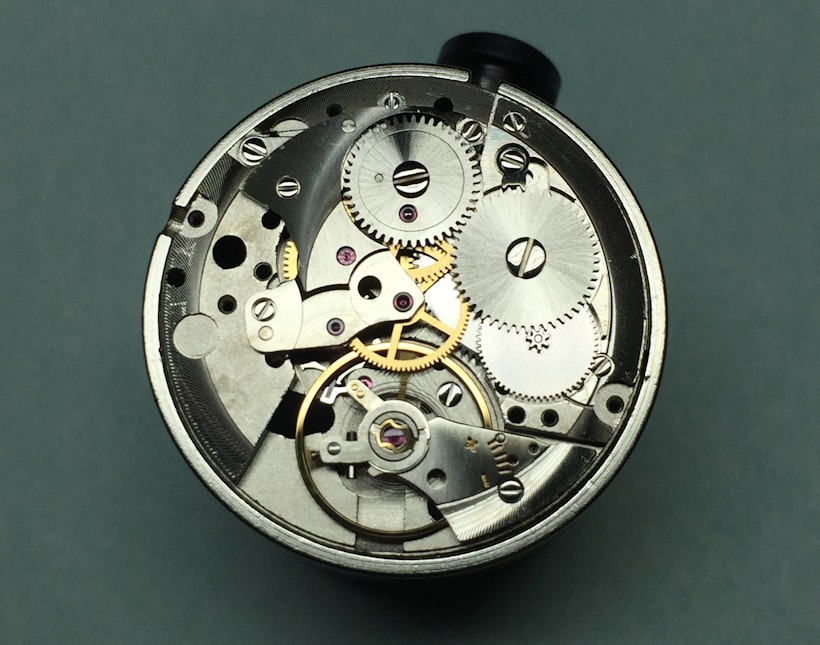
With that problem sorted out, it was time to get to the second oddity of this Zodiac. While the company produced several different variations of this caliber, the 72B and others in the family with the B suffix have a quickset function. Normally I would love the quickset, especially on a caliber that is sensitive to excessive movement of the hands. With the Sea Wolf however, this function required that the stem protrude slightly off of the case, looking a touch odd. As a result, for both aesthetics and (according to one expert) waterproofing concerns, many of these stems have been clipped short, preventing the quickset function from working. Normally this would not be a big issue. You would just get a new stem and cut it to size. The 72B stem however is nearly impossible to find as it is long out of production, and was only made for a very short period of time. This brings me to a growing concern within the watch world: parts.
Vintage parts just aren’t made anymore. Stocks are dwindling, and there is no replenishment of them. As time goes on, this isn’t going to get better, and fixing these vintage pieces will get harder and harder. This should be a real issue in deciding what vintage watch to buy, especially if you are buying it in unserviced, non-working, or "as is" condition. For Zodiacs (for the time being) there fortunately is a solution, albeit in the form of a sort of monopoly. One watchmaker by the name of Ron Gordon (and his father before him) had enough foresight to buy up a huge stock of vintage Zodiac parts, making him the only watchmaker I know of capable of both servicing these pieces, and replacing worn out parts with genuine NOS parts.

After some searching I was able to get the stem I needed and got this watch back to its prime. In all my time collecting and servicing these pieces, I have never come across such a clean dial and hands. They were absolutely perfect, and a new crystal brought them back out. Fully functioning and on its original band, this is truly stunning and rare vintage Sea Wolf that really rekindled my love for these pieces, and for a little while at least, made me forget the eccentricities of these calibers.
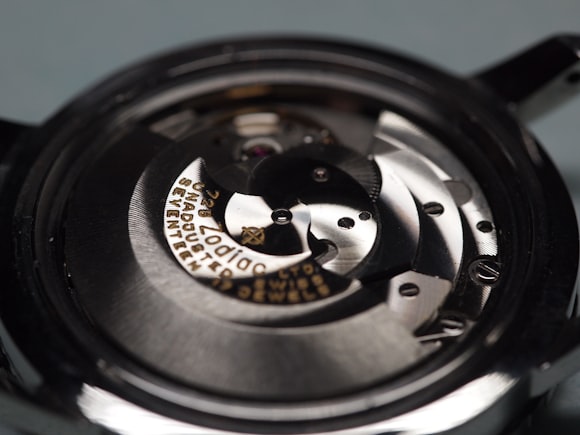
No comments:
Post a Comment